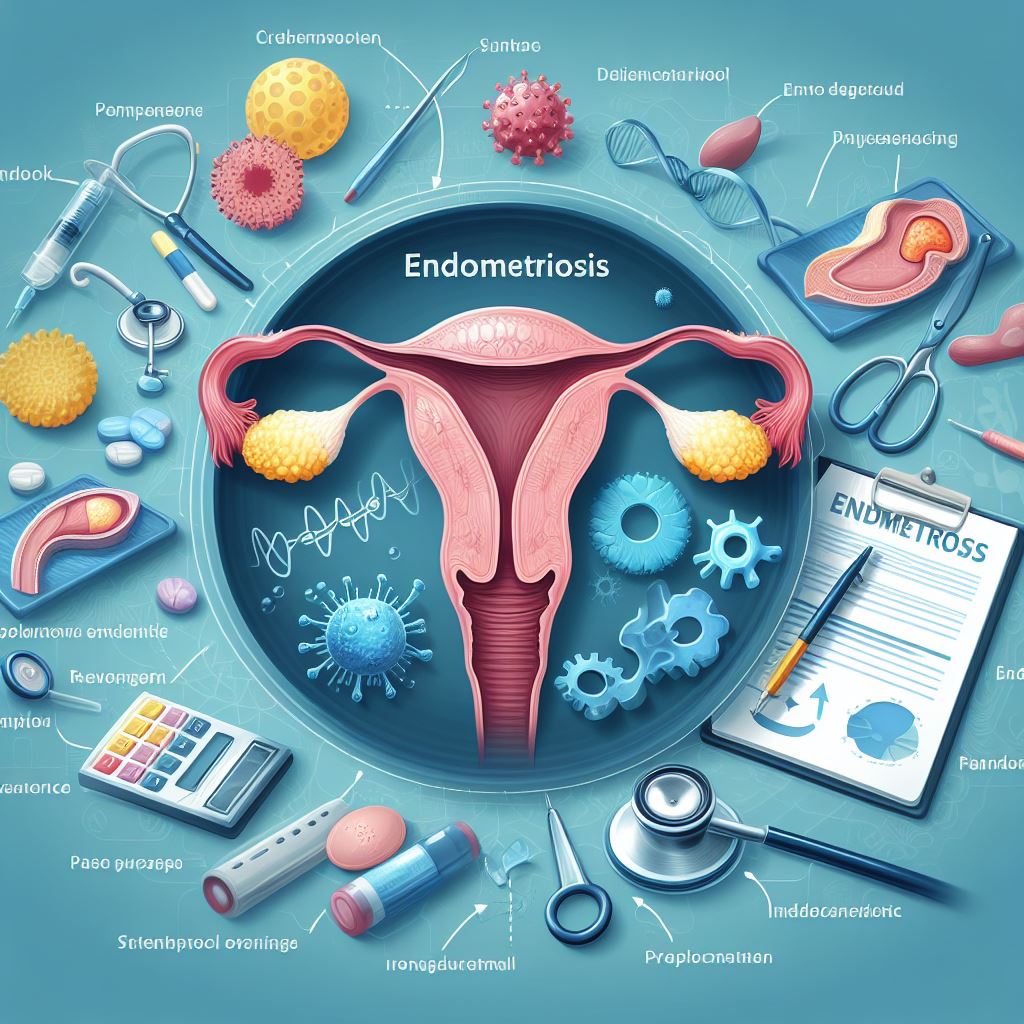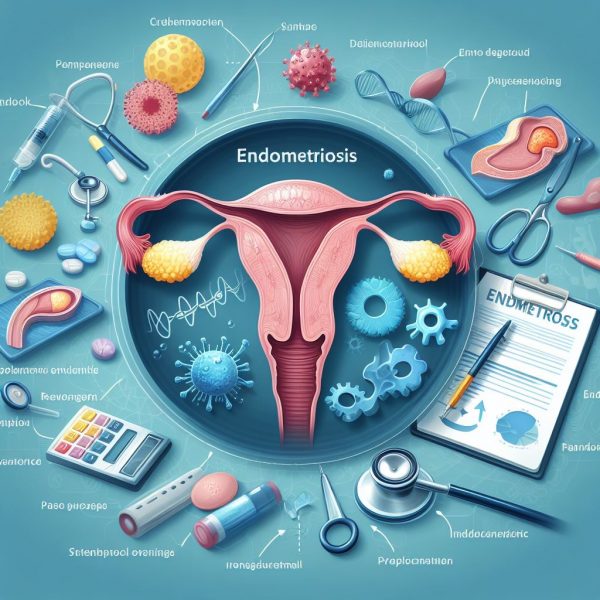The tissue that lines the inside of the uterus is called the endometrium. Endometriosis occurs when this tissue, which should be confined to the uterus, is found outside the uterus. It’s like having something where it’s not supposed to be. Endometriosis is a serious gynaecological condition that significantly affects the quality of life for women affected by it. This article discusses endometriosis, including its causes, symptoms, risk factors, complications, diagnosis, and treatment options.
Read more about Health
What is Endometriosis
Endometriosis is a complex condition characterized by the growth of endometrial-like tissue outside the uterus. This tissue can develop on various pelvic structures, including the ovaries, fallopian tubes, and the outer surface of the uterus, and in some cases, it can invade neighbouring organs.
During the menstrual cycle, these ectopic tissues respond to hormonal fluctuations much like the endometrium inside the uterus. However, unlike the normal endometrium that sheds during menstruation and exits the body, the displaced tissue lacks a way to escape. This leads to inflammation, pain, and the formation of scar tissue (adhesions) over time. This ongoing process can result in varying degrees of pain, from mild to severe cramping.
Causes of Endometriosis
The exact cause of endometriosis remains elusive, although several theories attempt to explain its origins. One hypothesis suggests that retrograde menstruation, where menstrual blood containing endometrial cells flows backwards into the fallopian tubes and pelvic cavity, contributes to the development of endometriosis. Genetic factors may also play a role, as individuals with a family history of the condition are at higher risk. Environmental influences, such as exposure to certain toxins or chemicals, are also considered potential contributors. However, these theories are speculative, and the precise cause of endometriosis remains unknown, highlighting the complexity of this condition.
Sign up for the Connect Nigeria daily newsletter
Risk Factors
Certain factors have been noted in individuals who develop endometriosis:
- Family history of endometriosis (i.e., genetic predisposition)
- Early menarche
- Late menopause
- Mechanical obstruction to menstrual flow
- Short menstrual cycles
- High estrogen levels
- Never given birth
- Heavy menstrual flow
- Low BMI
Symptoms
The hallmark symptom of endometriosis is pelvic pain. However, we must understand that individuals experience symptoms at varying degrees.
Other symptoms include:
- Dysmenorrhoea
- Painful intercourse
- Heavy menstrual bleeding
- Painful urination and blood in urine
- Painful bowel movements
- Chronic fatigue
- Infertility
- Diarrhea
- Constipation
- Lower back pain
- Infertility
Diagnosis
Diagnosing endometriosis involves a few important steps to understand and address the condition.
-
Pelvic Examination
Your doctor will start with a pelvic exam to carefully check for any signs of endometriosis. They’ll feel for tender areas, cysts, or scars around your uterus and pelvic organs, which could suggest the presence of endometriosis.
-
Laparoscopy
If the pelvic exam raises suspicions, your doctor may recommend a laparoscopy, a minimally invasive procedure. During this surgery, the doctor can directly see inside your pelvis and identify any abnormal tissue growth. They may also take biopsies for a clear diagnosis.
-
Imaging Studies
Sometimes, ultrasound or MRI scans are used to get a clearer picture of larger endometriotic cysts or masses.
Treatment Options
Medical Treatments
- Pain Relief Medications: Your doctor may suggest taking over-the-counter pain relievers like ibuprofen or acetaminophen to help manage pelvic pain associated with endometriosis.
- Hormonal Therapies: These treatments can help control symptoms by regulating your menstrual cycle leading to reduced pain and slowing down the growth of endometrial tissue.
Surgical Interventions
- Laparoscopic Surgery: If your symptoms are severe or if you’re trying to improve fertility, your doctor might recommend a minimally invasive surgery called laparoscopy. During this procedure, the surgeon can remove endometrial tissue, cysts, and scar tissue, which often brings significant relief.
Lifestyle Modifications
- Diet Changes: Some people find that adjusting their diet, such as reducing processed foods or inflammatory triggers like gluten and dairy, can help manage symptoms.
- Exercise and Stress Management: Engaging in regular physical activity and practising stress-reducing activities can also be beneficial in managing pain and improving overall well-being.
Register to attend the CN Business Mixer
Conclusion
In conclusion, It is essential to seek medical advice and support if you suspect you have endometriosis or are experiencing symptoms like pelvic pain, heavy periods, or fertility issues. Working closely with your healthcare team is key to developing a personalized treatment plan that aligns with your needs and lifestyle. They can guide you through the available options and help improve your quality of life.
Sources: | Mayoclinic.org | Webmd.com
Got a suggestion? Contact us: [email protected]


